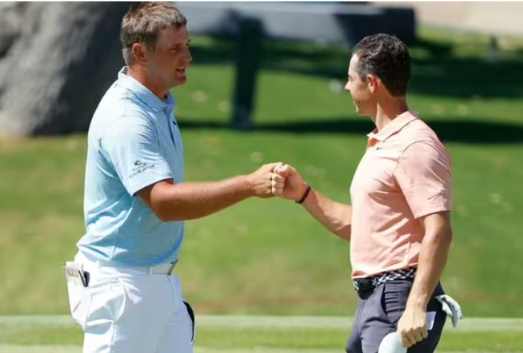Over a year has passed since the prospect of a merger between the PGA Tour and LIV Golf, backed by Saudi Arabia’s Public Investment Fund (PIF), sent shockwaves through the golfing world. Despite ongoing discussions, a final deal remains elusive. PIF recently indicated that negotiations are “continuing to progress,” keeping both players and spectators in suspense.
The PGA Tour’s special subcommittee, which includes prominent figures such as Rory McIlroy, Tiger Woods, and Adam Scott, along with commissioner Jay Monahan and others, is deeply involved in the talks. While the initial framework for an agreement was laid out some time ago, the finalisation of terms has not yet been achieved, leaving the golf community increasingly anxious.
In a joint statement, the PGA Tour and PIF confirmed: “Representatives from the PGA TOUR Enterprises Transaction Subcommittee and the PIF have been meeting multiple times weekly to work through potential deal terms and come to a shared vision on the future of professional golf. On Friday evening, an in-person session in New York City included the entire Transaction Subcommittee and PIF Governor Yasir Al-Rumayyan and his team, where more progress was made.”
The PGA Tour has received a substantial financial boost, including a $3 billion investment from Strategic Sports Group, bolstering their confidence in a lucrative agreement. However, the prolonged negotiations are beginning to cause frustration among committee members.
Rory McIlroy, who is on the transaction committee, has taken a step back from the forefront of the negotiations. He recently stated, “There’s going to be people in that room on the PGA Tour side who are going to take the lead. And it’s not going to be Adam, Tiger, or I. That’s going to be Jay, Joe Gorder, Joe Ogilvie, John Henry. It’s going to be the business guys. We’re there to maybe give a perspective from a player’s point of view.”
This marks a shift from McIlroy’s earlier stance when he expressed disdain for LIV Golf. He acknowledged the influence of PIF in golf, stating, “Whether you like it or not, the PIF are going to keep spending money in golf… at least the PGA Tour now controls how that money is spent. One of the biggest sovereign wealth funds in the world, would you rather have them as a partner or an enemy? At the end of the day, money talks and you’d rather have them as a partner.”
McIlroy’s softened stance towards a merger reflects a broader recognition of the complexities involved. He said, “My stance on some of the LIV stuff has softened. They’re contracted to play 14 events, but the other 38 weeks of the year you’re free to do what you want. The only thing is there are so many tours and so many golf tournaments. There are only a certain amount of weeks in the year. That’s the complicated part. Trying to figure out which tournaments go where, when do we play them, how many players, what players.”
Meanwhile, Bryson DeChambeau, who left the PGA Tour for LIV Golf, has expressed hope for a return to his favorite PGA events if the merger proceeds. Despite a lucrative £98 million offer, DeChambeau emphasized his decision was motivated by family considerations. He said, “People can say I moved to one side, but I did it for my family and what I had in front of me at that point in time. I think my mom would have probably smacked me for not taking the deal.”
DeChambeau also urged continued dialogue between players from both the PGA and LIV Golf circuits. He shared his aspirations to participate in events like the Shriners or the Arnold Palmer Invitational, expressing a desire to showcase his skills globally.
As negotiations continue, the future of professional golf hangs in the balance, with key stakeholders striving to forge a path forward amid complex and evolving dynamics.
